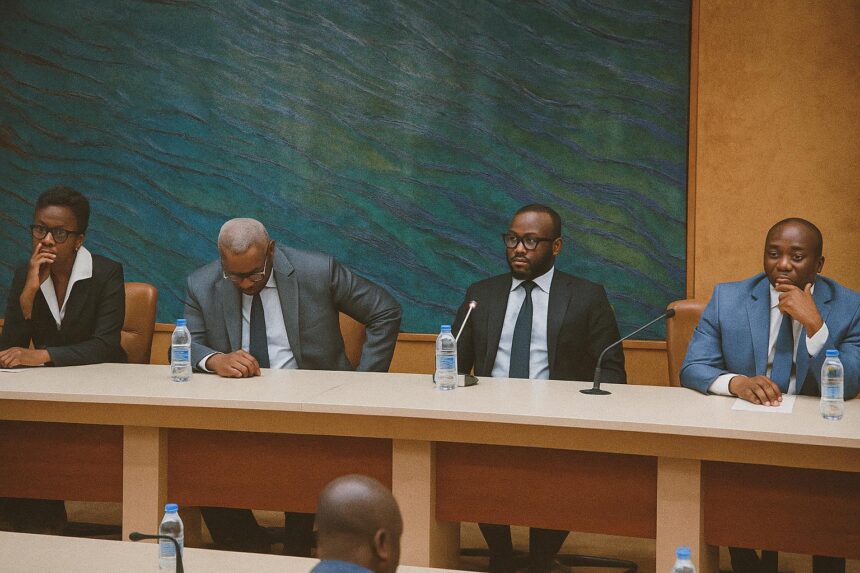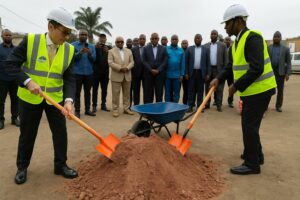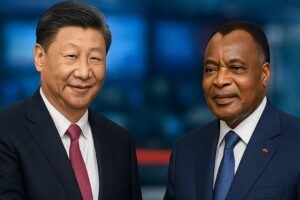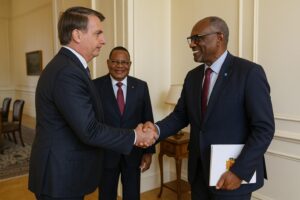Modest Trade Flows Cushion the Immediate Shock
Official customs data compiled by the U.S. International Trade Commission show that Central African Monetary and Economic Community (CEMAC) exports accounted for barely 2.1 percent of the region’s total external sales in 2022, compared with 27.4 percent directed to the European Union and 24.5 percent to China. This narrow channel implies that the headline increase in American duties—10 percent for Congo, the Central African Republic and Gabon, and 13 percent for Cameroon, Equatorial Guinea and Chad—will not, in itself, rewrite the region’s balance-of-payments arithmetic.
- Modest Trade Flows Cushion the Immediate Shock
- BEAC Seeks Policy Coherence Amid Global Protectionism
- Oil and Timber: Vulnerable Pillars of External Revenue
- Congo-Brazzaville Advances a Pragmatic Diversification Agenda
- Leveraging Intra-African Trade and the AfCFTA Dividend
- Maintaining Macroeconomic Stability Through Coordinated Action
- A Calculated Calm in an Era of Trade Headwinds
BEAC Seeks Policy Coherence Amid Global Protectionism
Alert to second-round effects, the Bank of Central African States convened its inaugural Economy and Finance Day by videoconference on 24 July. BEAC Governor Abbas Mahamat Tolli urged finance ministers and private-sector leaders to “use the moment to refine our common external tariff and accelerate value-addition at home,” a sentiment echoed by regional think tanks such as the Libreville-based Economic Policy Analysis Unit (BEAC 2023 communiqué). Participants concluded that while the tariff hike runs counter to World Trade Organization norms, a calibrated response—rather than retaliatory rhetoric—better serves the six member states.
Oil and Timber: Vulnerable Pillars of External Revenue
Hydrocarbons dominate hard-currency earnings for Gabon, Congo-Brazzaville and Equatorial Guinea, yet crude cargoes to U.S. refineries have dwindled since the shale boom. The more exposed segment may well be processed timber, where Gabonese plywood and Cameroonian sawnwood still enter niche American markets. Analysts at the IMF’s Regional Economic Outlook warn that any squeeze on these sectors could marginally erode foreign-exchange reserves and amplify imported inflation (IMF 2022).
Congo-Brazzaville Advances a Pragmatic Diversification Agenda
In Brazzaville, authorities view the tariff episode as a reminder—not a deterrent—to intensify economic transformation. The Special Economic Zone of Pointe-Noire, inaugurated last year with Emirati and Chinese investors, aims to process timber locally, refine mineral sands and assemble agro-equipment for the domestic and regional market. A senior official in the Ministry of International Cooperation notes that “President Denis Sassou Nguesso has repeatedly framed diversification not as an option but as the sovereign pathway to resilience,” highlighting recent incentives for cocoa, cassava and pharmaceutical ventures.
Leveraging Intra-African Trade and the AfCFTA Dividend
Beyond national initiatives, CEMAC policymakers underscore the African Continental Free Trade Area as a structural hedge against external volatility. By harmonising customs regimes with the wider Economic Community of Central African States and digitising border posts at Garoua-Boulai and Kye-Ossi, Cameroon projects a 15 percent upswing in sub-regional trade volumes by 2025 (UNECA 2023). Such corridors could absorb part of the timber and agri-processing output redirected from the United States.
Maintaining Macroeconomic Stability Through Coordinated Action
BEAC baseline simulations anticipate a transient dip—no more than 0.2 percentage points—in the region’s reserve accumulation path, provided fiscal anchors remain intact. To that end, governments reaffirmed commitments to converge deficits below 3 percent of GDP and to deepen local-currency Treasury bill markets. While critics label the U.S. move unilateral, CEMAC officials prefer to read it as an impetus to modernise supply chains, upgrade logistics and court alternative partners in the Gulf and Southeast Asia.
A Calculated Calm in an Era of Trade Headwinds
History suggests that episodic tariff escalations seldom last beyond the political cycle that spawned them. By coupling disciplined macro-management with proactive industrial policy, the CEMAC bloc—and Congo-Brazzaville in particular—seems poised to weather the present squall without compromising long-term development goals. The true test will be whether current resolve translates into durable, non-commodity export capacity before the next gust of protectionism arrives.



















